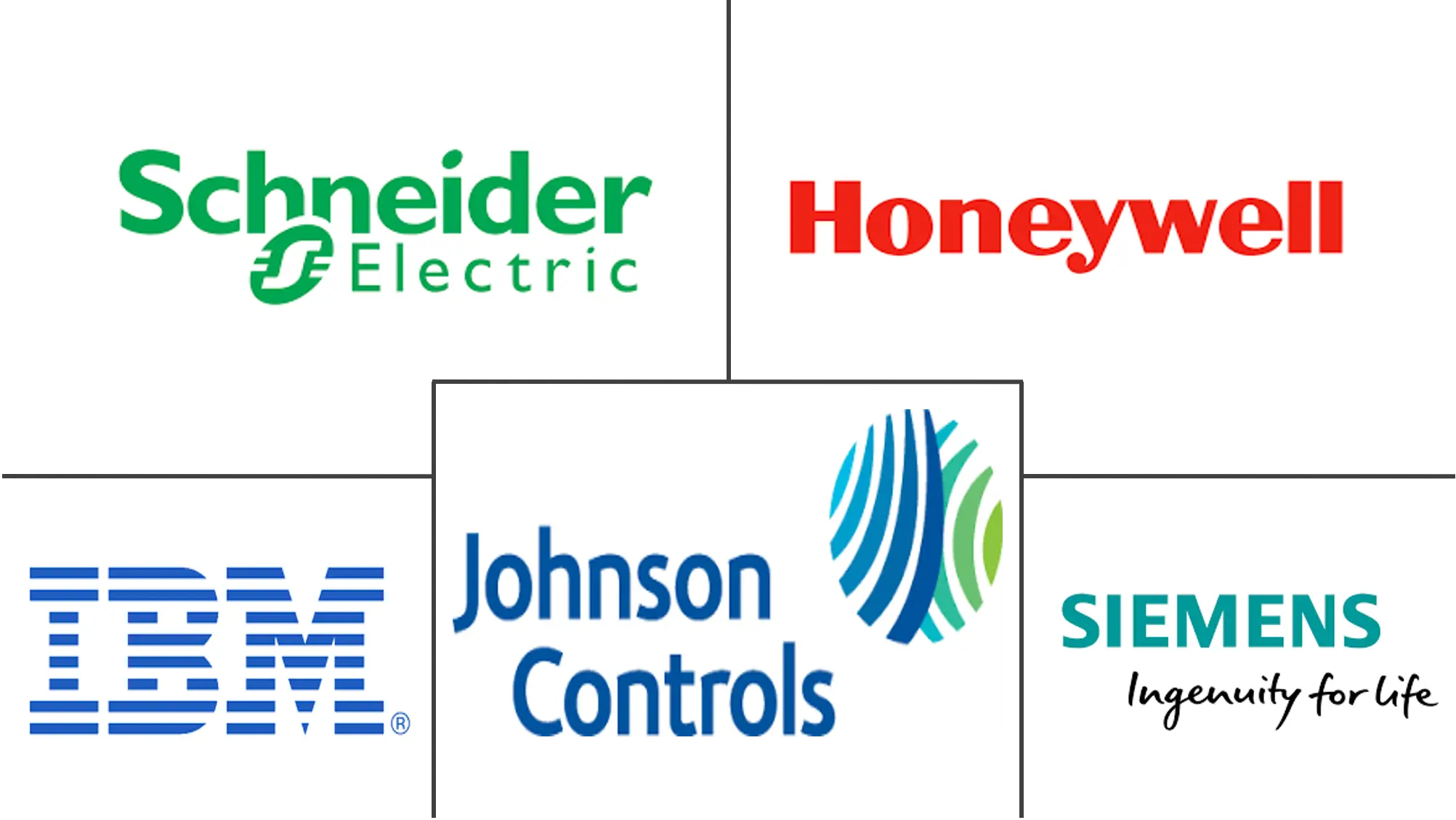Building Analytics Market Size and Share
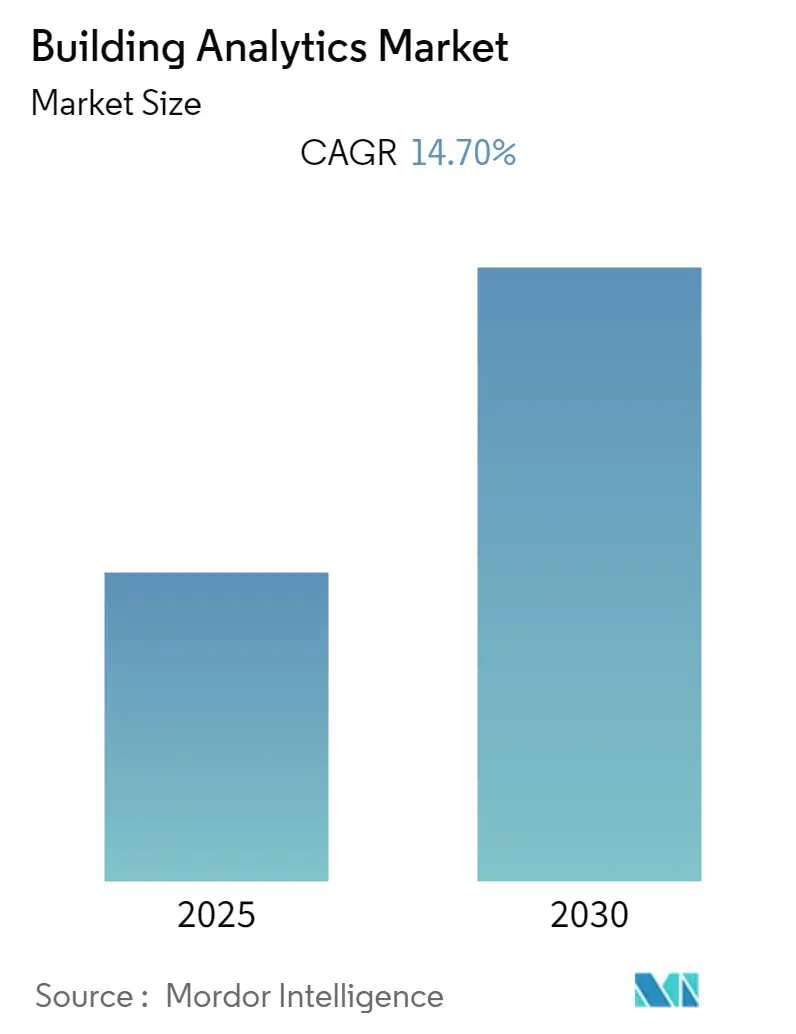
Building Analytics Market Analysis by Mordor Intelligence
The Building Analytics Market is expected to register a CAGR of 14.7% during the forecast period.
- The energy management use is expected to govern the overall building analytics market in terms of share and growth rate, as it is predominantly finding its use in all building facilities to reduce excessive energy consumption across premises. Constant progress in the information & communication technology market owing to innovative efforts have intensified the efficiency of building the analytics market.
- As the world's urban population grows by more than 2.5 billion, primarily to urban areas by 2050, according to MDPI, the construction of new, energy-efficient buildings and cities will be essential to the transformation of the economy. Moreover, the building and construction sector must be decarbonized by 2050 to meet the Paris Agreement's goals.
- The current energy performance of the building sector is weak. In the European Union (EU), with buildings accounting for nearly 40% of its energy consumption, the building sector should play a key role in effective climate policy.
- The trends such as the needs for a variety of buildings value chain (BVC) stakeholders, steadily increasing momentum of big data and their related technologies, combined with AI, namely the new 'engine' of the Fourth Industrial Revolution and IoT infrastructure management enablers constitute a catalyst towards conceptualizing and creating innovative applications and services for energy management and energy-efficient buildings.
- However, the requirement for additional expenditure to avail building analytics services is anticipated to hinder the building analytics market in the next few years. The absence of awareness for building analytics is one of the constraints of the building analytics market.
- Nevertheless, with notable growth in the population across the globe, construction activities are expected to rise substantially. This is projected to generate potential growth possibilities for the building analytics market in the upcoming years.
Global Building Analytics Market Trends and Insights
Energy Management Application to Hold the Largest Market Size
- The energy management utilization is supposed to dominate the overall building analytics market in terms of share and growth rate, as it is predominantly getting its use in all building facilities to decrease excessive energy consumption across premises. The HVAC systems and lighting control systems are important consumers of energy; hence the purpose of building analytics solution assists in interpreting the data generated from various equipment and facility systems and stimulate the equipment performance across the facility.
- According to Constellation Energy Resources, LLC, the United States spends about USD 400 billion on energy for commercial and industrial buildings, with USD 120 million on un-used energy every year. At a 10% reduction, with the application of Energy Management, USA saves nearly USD 40 billion each year on energy costs and reduce greenhouse gas emissions by the equivalent of 49 million motor vehicles.
- Energy performance certificates (EP certificates) are among the most important drivers of the energy performance of the European building stock. They provide a picture of the current state of the building stock in terms of energy efficiency and include recommendations to improve the buildings’ energy performance.
- Advanced data processing and management methods such as energy prediction, geo-clustering, energy performance prediction, and multi-criteria assessment of building interventions, among others. Tare combined in view of providing advanced and precise statistical analysis, data visualization, business intelligence, predictive modelling and multi-criteria decision support systems.
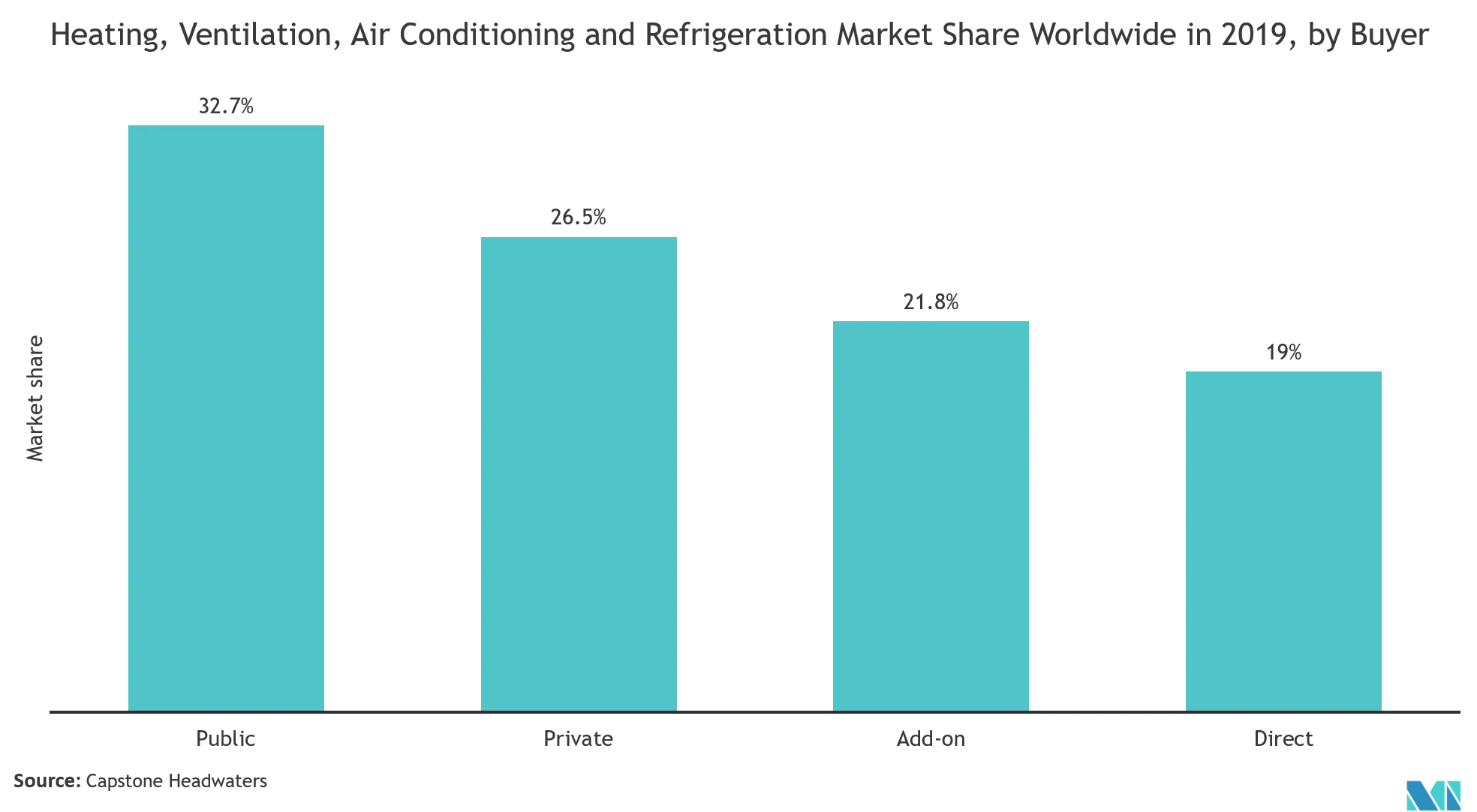
APAC to Record the Highest Growth Rate
- The Asia Pacific is a crucial region for the building analytics market and is projected to grow at a significant rate during the forecast period. The growing population, especially in India and China and hefty governmental investment in the manufacturing and construction sector, is anticipated to drive the demand for the market. These countries comprise over 40% of the globe, and building analytics in this region will grow at a very steep rate.
- Venders in APAC are spending in R&D activities to produce technologically advanced building analytics solutions. The prompt modernization and progress in the APAC region's construction activities have stimulated the growth of automatic centralized control of the HVAC systems installed in the buildings, eventually heading to the growth of the building analytics market in APAC.
- Primary growth drivers for the APAC building analytics market include substantial economic growth in the region's essential countries. Besides, leading economies in APAC, such as Japan, China, India, and Singapore, are leading in adopting the building analytics solution.
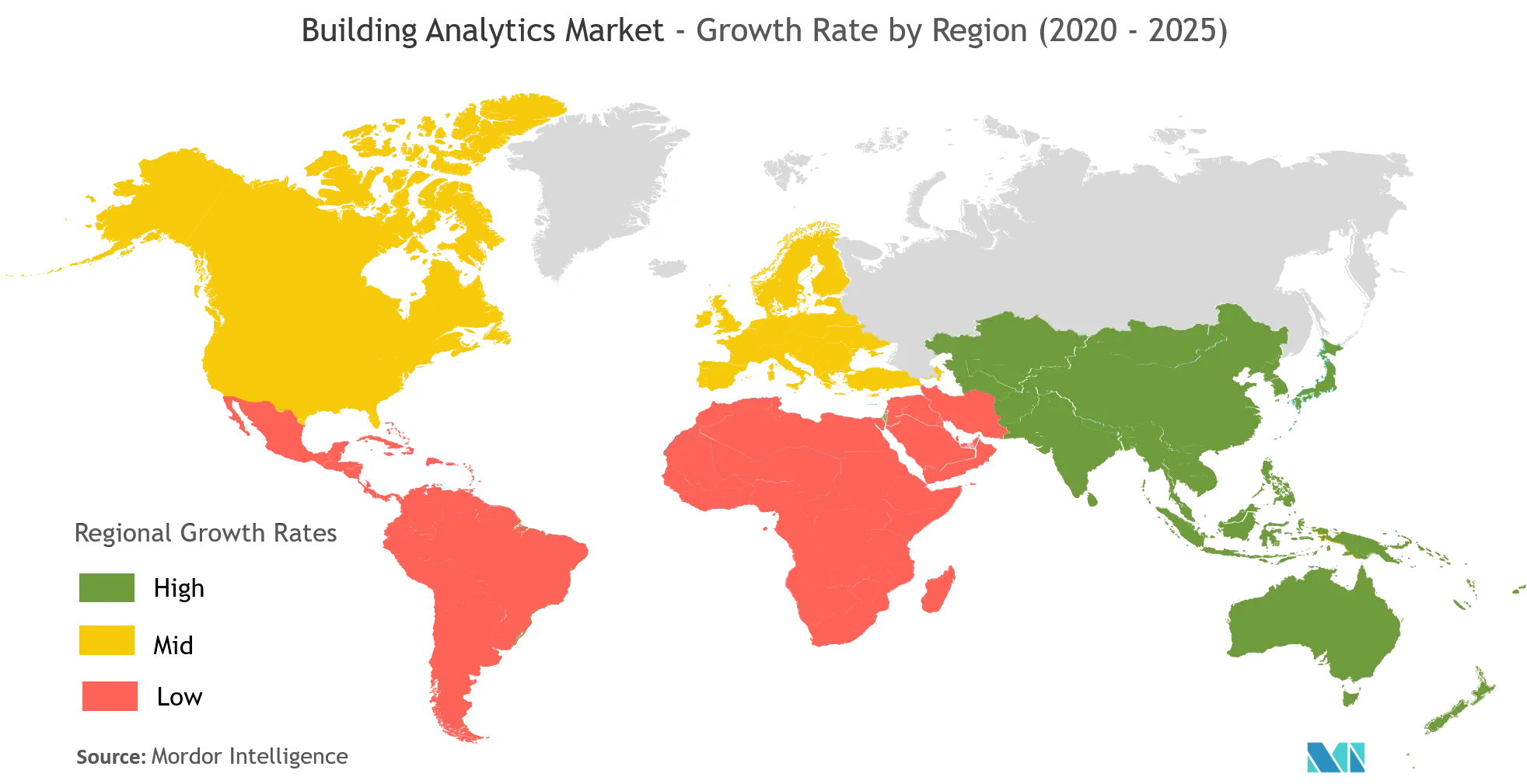
Competitive Landscape
The Building Analytics Market is moderately competitive and consists of a few major players. In terms of market share, some of the players currently dominate the market. However, with the advancement in the analytics, new players are increasing their market presence, thereby expanding their business footprint across the region. Major players operating in the building analytics market are Schneider Electric, General Electric Company, IBM Corporation, Siemens, Honeywell, Johnson Controls, Lucid, EnerNOC, BuildingIQ, Senseware, KGS Buildings, ENGIE Insight, BuildingLogiX, Lutron Electronics among others.
- Feb 2020 - Siemens enabled holistic energy data analysis in buildings. The latest energy monitoring software can now be fully integrated into the Desigo CC building management system, making the electrical infrastructure an integral part of smart buildings that are connected via the Internet of Things (IoT).
- June 2019 - Honeywell announced it launched a new category of software, Enterprise Performance Management for Operations Technology, that will improve the way a variety of companies collect, analyze and act on data from their operations. The software solution, called Honeywell Forge, will leverage the company's more than 100 years of expertise in asset and process control technology and will transform the way work gets done by owners and operators of buildings, airlines, industrial facilities, and other critical assets and infrastructure.
Building Analytics Industry Leaders
-
Schneider Electric
-
IBM Corporation
-
Johnson Controls International PLC
-
Honeywell International Inc.
-
Siemens AG
- *Disclaimer: Major Players sorted in no particular order
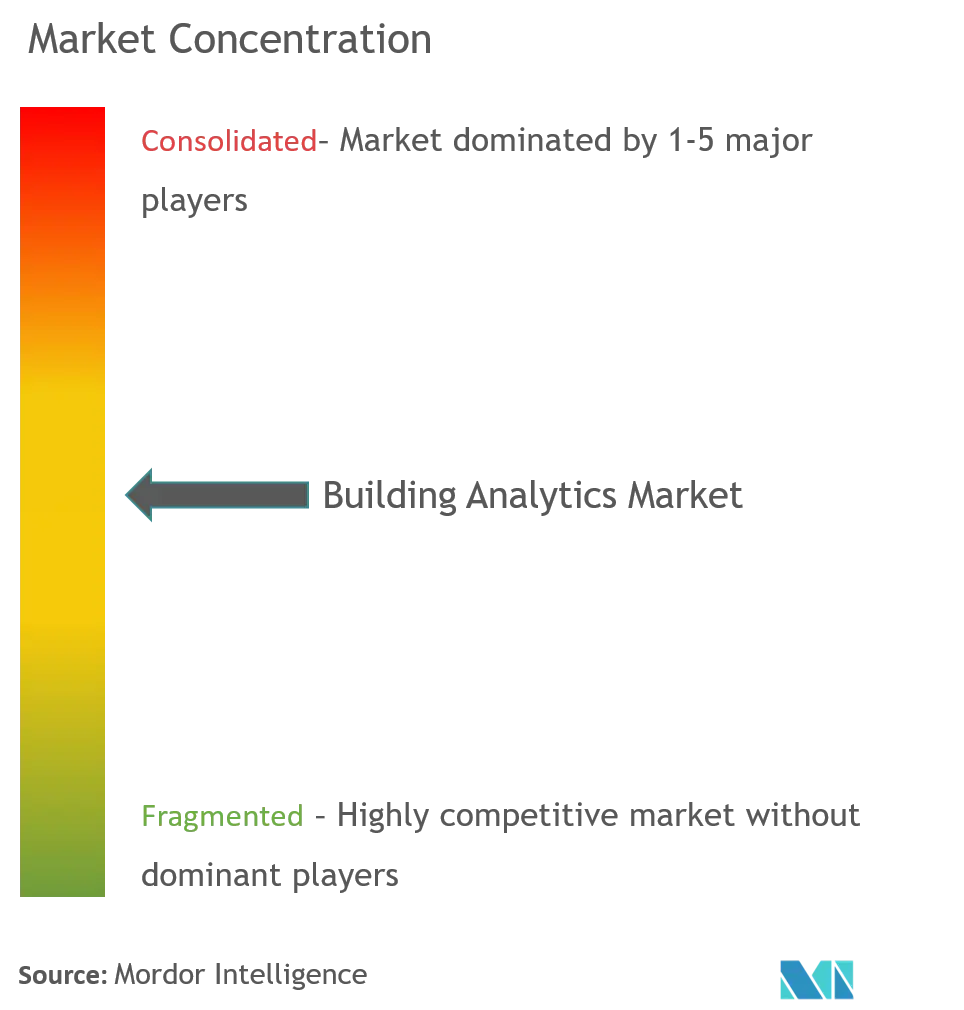
Global Building Analytics Market Report Scope
Building analytics transforms data which is created by the building management system into actionable intelligence. This enables the real-time monitoring, identification, and prioritization of cost-saving opportunities, threats to occupant comfort, connectivity, and mechanical system inefficiencies. Building analytics is based on performance reporting, statistical analysis, and automated diagnosing. It works by using the daily, monthly, and quarterly data for the particularized period and comparing it with history.
| Energy Management |
| Security Management |
| Fault Detection and Monitoring |
| Other Applications |
| Software |
| Services |
| On-Premises |
| Cloud |
| Residential Buildings |
| Commercial Buildings |
| Other Building Types |
| North America |
| Europe |
| Asia Pacific |
| Latin America |
| Middle East and Africa |
| By Application | Energy Management |
| Security Management | |
| Fault Detection and Monitoring | |
| Other Applications | |
| By Component | Software |
| Services | |
| By Deployment Mode | On-Premises |
| Cloud | |
| By Building Type | Residential Buildings |
| Commercial Buildings | |
| Other Building Types | |
| Geography | North America |
| Europe | |
| Asia Pacific | |
| Latin America | |
| Middle East and Africa |
Key Questions Answered in the Report
What is the current Building Analytics Market size?
The Building Analytics Market is projected to register a CAGR of 14.7% during the forecast period (2025-2030)
Who are the key players in Building Analytics Market?
Schneider Electric, IBM Corporation, Johnson Controls International PLC, Honeywell International Inc. and Siemens AG are the major companies operating in the Building Analytics Market.
Which is the fastest growing region in Building Analytics Market?
Asia Pacific is estimated to grow at the highest CAGR over the forecast period (2025-2030).
Which region has the biggest share in Building Analytics Market?
In 2025, the Asia Pacific accounts for the largest market share in Building Analytics Market.
What years does this Building Analytics Market cover?
The report covers the Building Analytics Market historical market size for years: 2019, 2020, 2021, 2022, 2023 and 2024. The report also forecasts the Building Analytics Market size for years: 2025, 2026, 2027, 2028, 2029 and 2030.
Page last updated on:
Building Analytics Market Report
Statistics for the 2025 Building Analytics market share, size and revenue growth rate, created by Mordor Intelligence™ Industry Reports. Building Analytics analysis includes a market forecast outlook for 2025 to 2030 and historical overview. Get a sample of this industry analysis as a free report PDF download.
